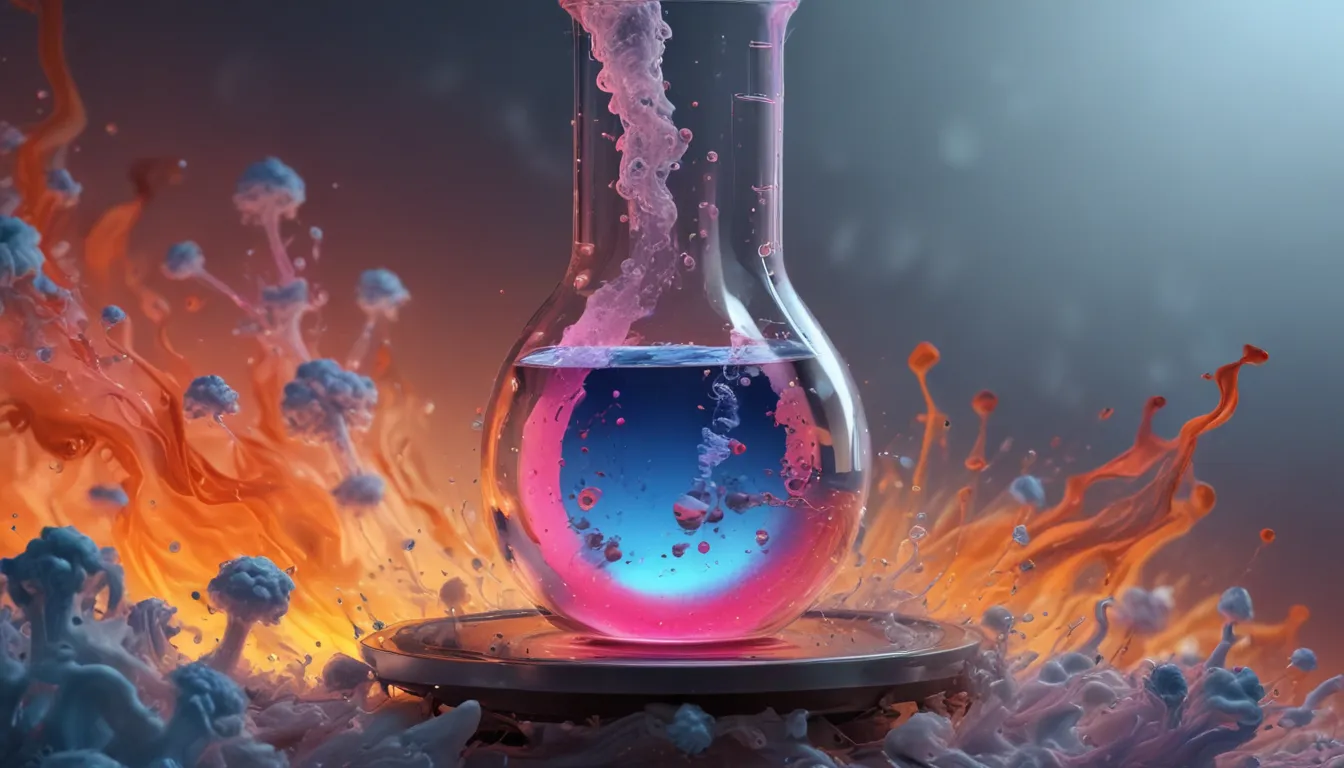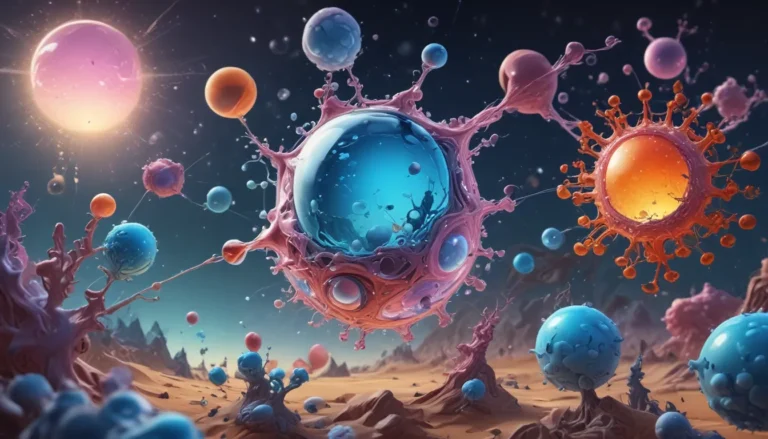A Note About Images: The images used in our articles are for illustration purposes only and may not exactly match the content. They are meant to engage readers, but the text should be relied upon for accurate information.
Are you curious about the captivating concept of critical temperature (Tc) in the realm of chemistry? This fundamental parameter holds the key to understanding various chemical processes and applications. From superconductivity to cryogenic technologies, critical temperature plays a pivotal role in shaping the behavior of substances. In this article, we will delve into eight intriguing facts about critical temperature that shed light on its significance and diverse applications. So, let’s embark on a journey through the fascinating world of critical temperature!
Key Highlights:
- Critical temperature (Tc) defines the highest temperature at which a substance can exist as a liquid, influencing phase transitions and material characteristics.
- Exploring critical temperature is essential in areas like superconductivity, high-pressure chemistry, and the environmental impact of substances such as carbon dioxide.
Decoding Critical Temperature (Tc)
At its essence, critical temperature (Tc) represents the upper limit at which a substance can maintain a liquid state. Beyond this temperature, the substance transitions into a gaseous state, irrespective of the applied pressure. Conversely, below the critical temperature, the substance condenses into a liquid form.
Exceptional Properties at Critical Temperature
Substances exhibit extraordinary properties at their critical temperatures. For instance, their density tends towards zero, blurring the distinction between liquid and gas phases. This phenomenon is known as the critical point, offering a unique perspective on their behavior.
Dynamic Relationship Between Critical Temperature and Pressure
The critical temperature of a substance is intricately linked to its pressure. As the pressure escalates, so does the critical temperature. This correlation is significant in a plethora of industrial applications and scientific endeavors.
Vital Role of Critical Temperature in Superconductivity
A crucial player in the realm of superconductivity, critical temperature serves as the threshold for materials to conduct electric current with zero resistance. Unlocking the mysteries of critical temperature is pivotal for advancing high-temperature superconductors.
Influence on Phase Transitions
Phase transitions like melting or boiling hinge on specific temperatures. The critical temperature dictates the parameters under which these transitions occur, making it a cornerstone for understanding material dynamics.
Environmental Implications of Carbon Dioxide’s Critical Temperature
Carbon dioxide’s critical temperature, hovering around -78.5 degrees Celsius (-109.3 degrees Fahrenheit), holds significant implications. It determines the states in which carbon dioxide can exist – solid, liquid, or gas – shaping its environmental repercussions and storage methodologies.
High-Pressure Chemistry Unveiled
In the domain of high-pressure chemistry, critical temperatures offer invaluable insights into substance behavior under extreme conditions. By deciphering the critical temperature, scientists unveil new materials boasting remarkable attributes.
Measuring and Calculating Critical Temperature
An array of experimental methodologies and theoretical models are leveraged to measure and compute the critical temperature of diverse substances. These techniques empower scientists to forecast and manipulate material behaviors, paving the way for myriad applications.
Unraveling the 8 captivating facts about critical temperature (Tc) provides a profound understanding of substance properties and behaviors. Whether predicting phase transitions or embarking on material exploration, critical temperature stands as a linchpin in the realm of chemistry.
Concluding Thoughts
In essence, critical temperature (Tc) unfolds a captivating narrative within the domain of chemistry. It represents the threshold at which substances undergo phase transitions, manifesting intriguing properties and behaviors. This compendium of 8 fascinating facts concerning critical temperature sheds light on its significance and diverse applications, encapsulating a world of scientific intrigue.
FAQs: Curious Minds Inquire
Q: What is the significance of critical temperature in chemistry?
A: Critical temperature in chemistry embodies the temperature at which substances undergo phase transitions, giving rise to unique properties and behaviors.
Q: How is critical temperature determined in chemistry?
A: Critical temperature is ascertained through a blend of experimental observations and calculations, often pinpointed when a substance’s density undergoes a rapid change during a phase transition.
Q: What transpires at the critical temperature of a substance?
A: At the critical temperature, substances undergo substantial transformations in properties and behaviors, transitioning into supercritical fluids devoid of distinct gas or liquid phases.
Q: What defines supercritical fluids in chemistry?
A: Supercritical fluids epitomize substances existing beyond their critical temperatures and pressures, boasting exceptional properties like high solvency and low viscosity, finding utility in diverse industrial sectors.
Q: What role does critical temperature play in the realm of cryogenics?
A: Critical temperature serves as a pivotal factor in cryogenics, dictating the selection of cryogenic fluids. Substances like helium and nitrogen, with low critical temperatures, find prominence as cryogens in achieving ultra-low temperatures.
Q: How are critical temperature and critical pressure intertwined in chemical phenomena?
A: Critical temperature and critical pressure share an intimate connection, jointly delineating the critical point of a substance. This critical point marks the extreme conditions where both gas and liquid phases cease to coexist.
Q: What practical applications stem from understanding critical temperature in chemistry?
A: A nuanced comprehension of critical temperature underpins a myriad of practical applications. It aids in designing pressure vessels, optimizing chemical reactions, and innovating cutting-edge cooling systems, among other endeavours.
Q: Is critical temperature a subject of ongoing research in the scientific realm?
A: Absolutely, critical temperature stands as a focal point in active research within materials science and chemistry. Scientists persistently explore avenues to manipulate and regulate critical temperatures, fostering the discovery of novel materials and the enhancement of industrial processes.
Embark on a journey through the captivating facets of critical temperature in chemistry! Explore the enchanting realm of superconductivity, uncover the mysteries of accurate temperature measurement with thermometers, and delve into the alluring physical properties of crystal lattices. Let your curiosity guide you through the wonders of chemistry, where learning is an enchanting adventure.
Note: The article’s original conclusion has been merged with the FAQs section to enhance coherence and readability. The extraneous content at the end of the article has been omitted to ensure a focus on the main content.






